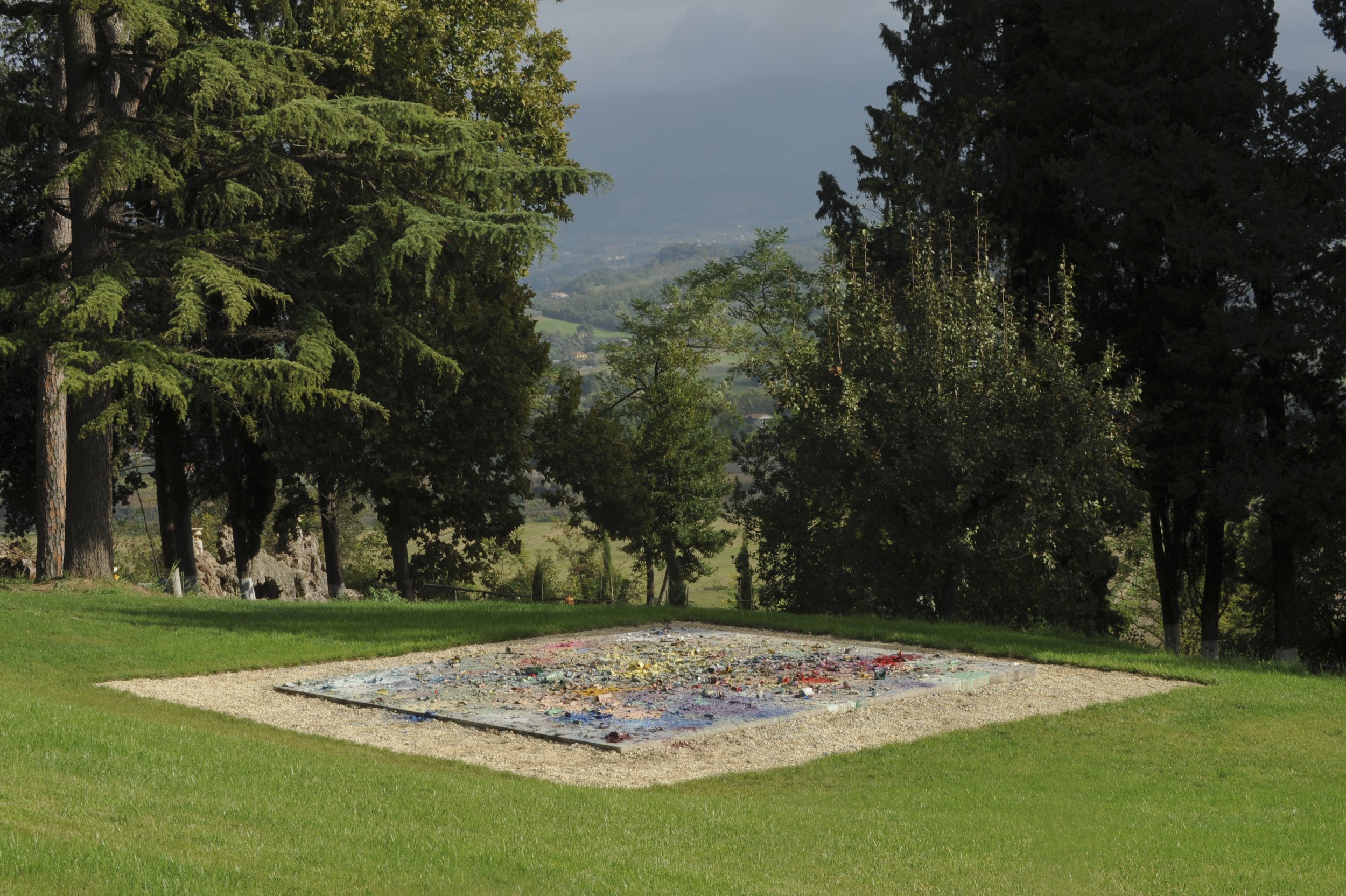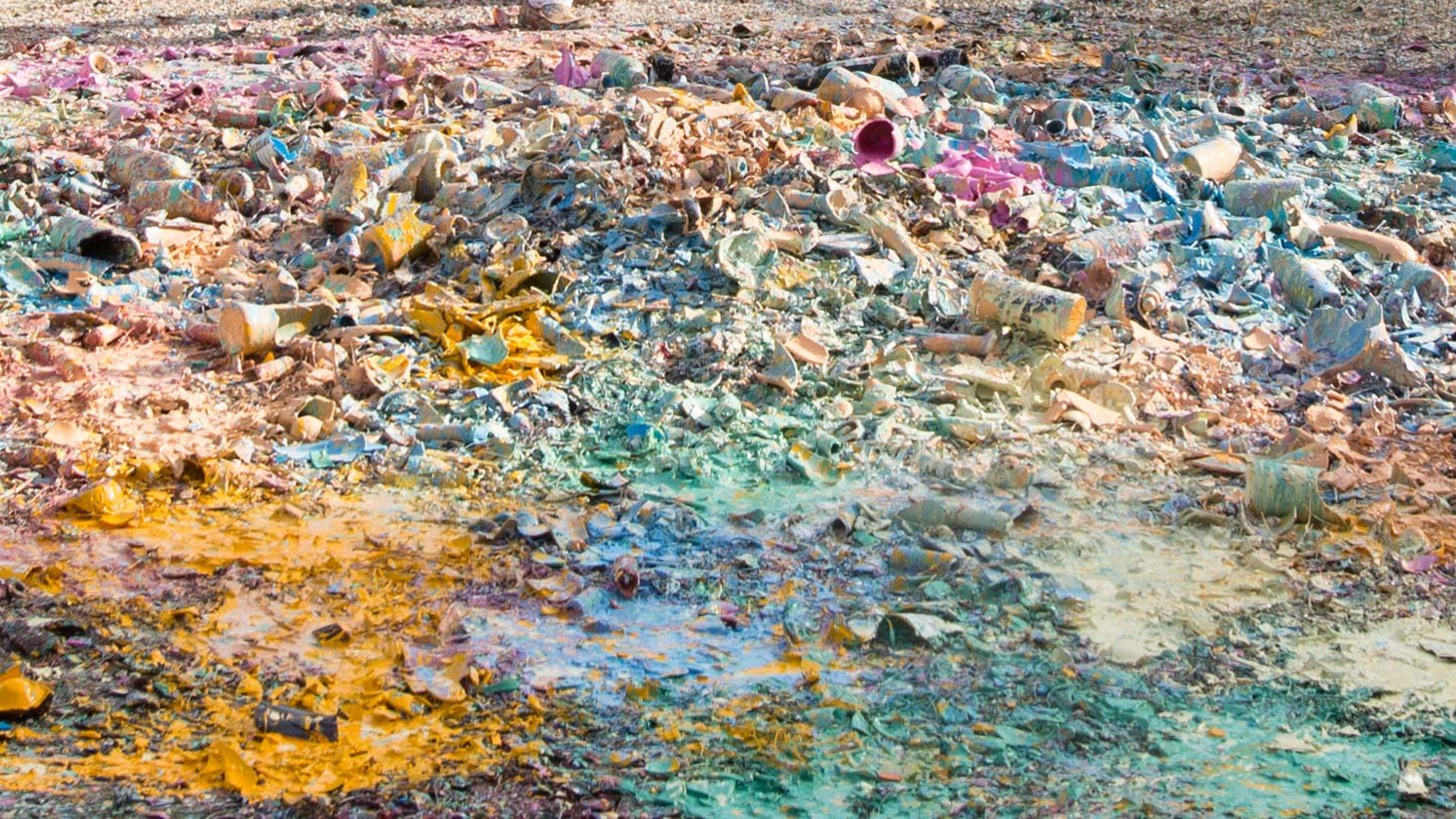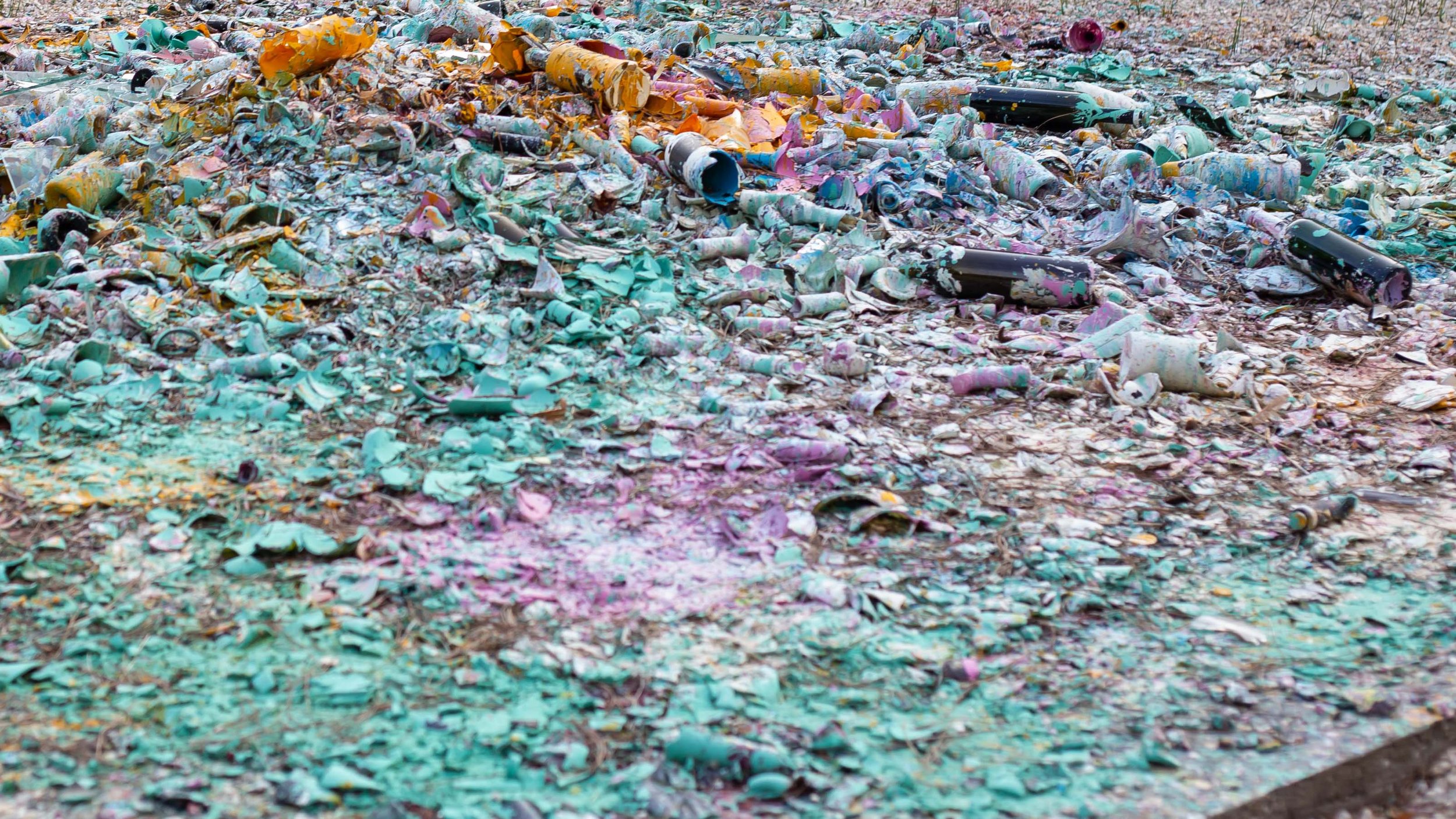
The “Monument to Happiness” (Kofukuhi) is a work-in-progress art piece by the prolific Japanese artist and co-founder of the Gutai movement, Shōzō Shimamoto (1928-2013). Considered one of the greatest artists of the Post-War period and of the Japanese avant-garde, he was an innovator, deviating from the 20th century pictorial tradition to create a new way of painting.
Shimamoto experimented extensively and was focused on “freeing color from the paintbrush” and bringing it back to a chromatic dimension through the implementation of physical aids, such as a bottle or a glass full of paint. He upheld that these instruments would create a distance between artist and material, incorporating chaos into the creative process. The result: an explosion of color and an entirely new technique, the “bottle crash”.
The artwork ideated for the Fondazione Serpone is based on the same premise as another monument he had already brought to life in Japan, entitled, “Proof of Peace”. This artwork is to be renewed annually with a performance on the condition that peace is present in Japan. The variation he desired in the form of “Monument to Happiness” is the only work-in-progress piece by the artist in the Western Hemisphere. The artist’s indications were simple: collect all of the bottles consumed throughout the course of the year, fill them with color, organize a party, invite all guests to participate in the “bottle crash”, and repeat every year for 100 years.


“The gesture, the launch of paint from a distance onto the canvas becomes speed, eroticism and the desire to broaden the magnetic field of the work through the introduction of chaos, which leads in the direction of the recognition of a total event, also a result of magical thought.”
— Achille Bonito Oliva
